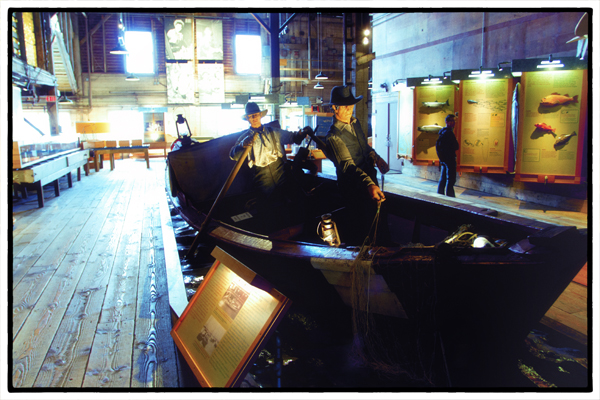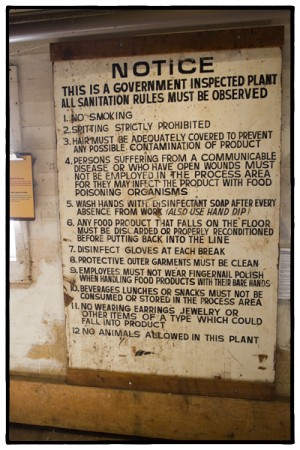When I look at a map of Richmond it looks to me like the profile of a pig’s head and down at the bottom of the pig’s snout is Steveston Village, which probably should be its own little town but is actually still part of Richmond.
Back in the early 1800s, Steveston was the center of British Columbia’s fish cannery activity (at one point there were 15 canneries here). One of those facilities, the Gulf of Georgia Cannery, which was built in 1894, has been converted into a national museum to commemorate the West Coast fishing industry.
Go through it, like I did, and you’re bound to come to two conclusions: Working in a fish cannery was a nasty job and you’ll never eat canned fish again.
They don’t pull any punches here. You see exactly how the fish—mostly salmon—came into the cannery and how it was quickly skinned, gutted, boned, and stuffed in a can. If you’re not grossed out by what was called “the sliming table,” where mostly Chinese and Japanese women, many with babies on their backs (hey, there was no daycare center for cannery workers) would clean the blood and guts from butchered salmon all day long, then just check out the super-duper mechanical wonder that, in mere seconds, could chop the head and tail off a salmon, scale it with a series of spinning brushes, and spit it out on a conveyor belt like a box of chocolates.
And what happened to all those fish heads and guts? Well, there’s a big hole near the sliming table where all the blood and guts were flushed back down to the Fraser River. Just upriver from where the locals pulled out their water for drinking, cooking, and cleaning purposes.
Think how easy it must have been for the locals to make fish soup every night since most of the ingredients came straight out of the tap.
Tags: Canada, Gulf of Georgia Cannery, Richmond, Steveston



Recent Comments